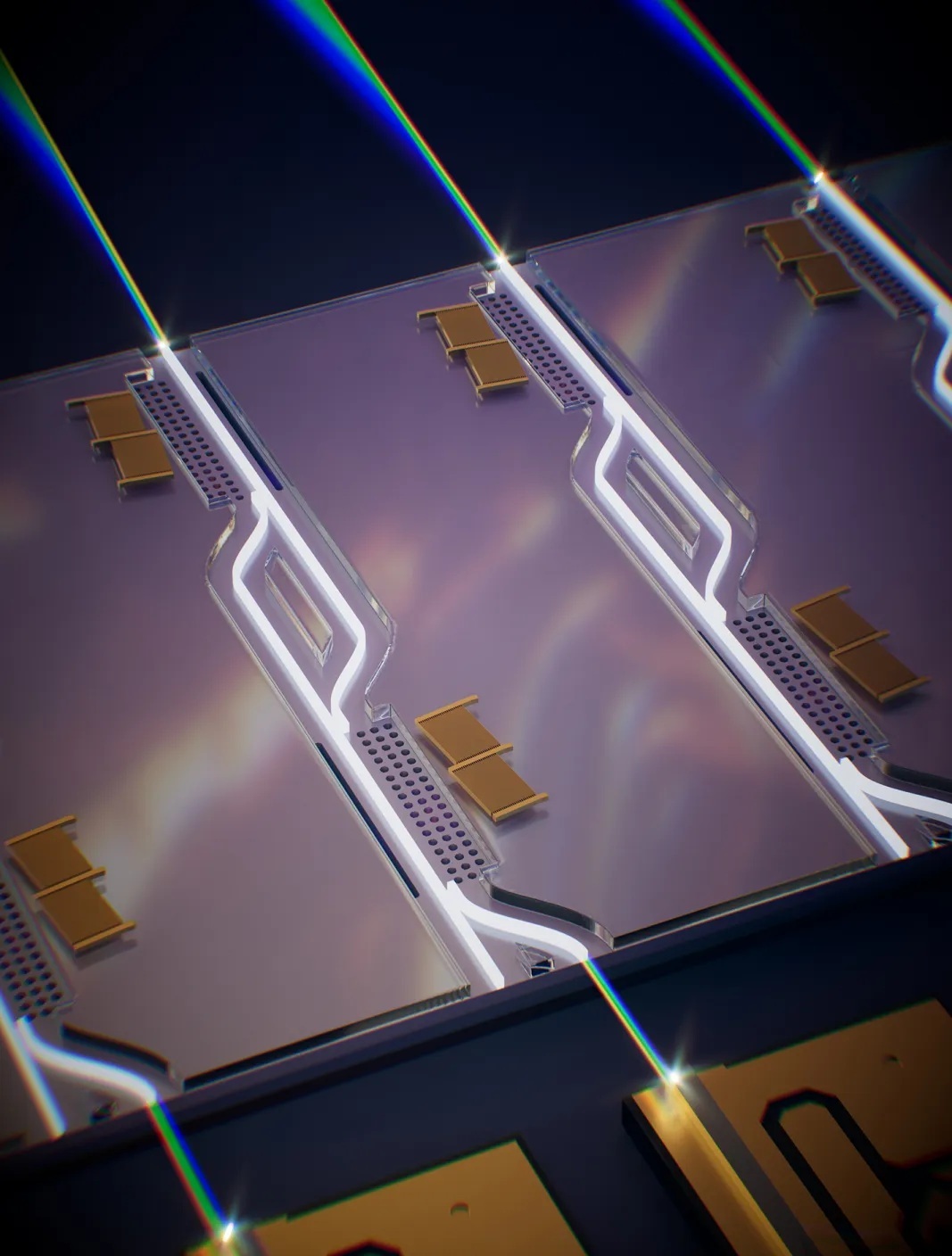Apr 15, 2025
Yale researchers have figured out a better way to control the path of light on small chips, a breakthrough that could lead to better and cheaper sensors, smart phones, and other devices. Led by Prof. Peter Rakich, the results are published in Nature Photonics.
Photonic integrated circuits (PICs) use light, or photons, to provide significant advantages over conventional electronics in terms of efficiency, speed and allowing for smaller devices. The ability to generate, manipulate, and detect light using PICs of increasing complexity has opened the door to revolutionary advancements in classical and quantum computation, optical communications, as well as imaging and sensing technologies.
Incorporating a component known as an optic isolator into PIC’s has the potential to make them even more powerful.
“It’s an essential component to protect lasers,” said Haotian Cheng, first-author of the paper, and a graduate student in the Rakich lab. “It will let light pass in one direction, but block it in the other direction.”
The challenge, though, is that optic isolators rely on magnetic materials, which are incompatible with the complementary metal-oxide-semiconductor (CMOS) materials used to make PICs.
“So it's very hard to make that material out of your silicon chip,” Cheng said. “We need to find alternatives.”
In this case, the researchers made their own alternative by creating a non-magnetic optic isolator that allows for a wide range of light frequencies. Other researchers have demonstrated the use of optic isolators in PICs, but they come with limitations. They can only operate within a few gigahertz of optical bandwidth, for instance, which greatly limits functionality. In their new paper, the Yale researchers demonstrate that their approach allows the system to scale up the optical bandwidth to two terahertz (one teraherz equals 1,000 gigaherz) which means it can operate with multiple colors of light sources.
The system includes two acousto-optic beam splitters, each of which can split light beams and change their directions, creating what’s known as a nonreciprocal multimode interferometer that allows for easy control of the paths of light.
“If we can move everything on chip,” Cheng said, it could significantly reduce the cost of optical communications devices and other technologies. It will also make them more efficient and versatile.
“The oscillator is an essential component to make everything work robustly,” he said. “With this building block, we can achieve all the functions in silicon photonic chips, which will make the industry change from a micro-assembled optical component to a fully on-chip platform, which will dramatically drop the cost.”
In addition to Cheng and Rakich, authors of the paper are Yishu Zhou, Freek Ruesink, Margaret Pavlovich, Shai Gertler, Andrew L. Starbuck, Andrew J. Leenheer, Andrew T. Pomerene, Douglas C. Trotter, Christina Dallo, Matthew Boady, Katherine M. Musick, Michael Gehl, Ashok Kodigala, Matt Eichenfield, Anthony L. Lentine, and Nils T. Otterstrom.





